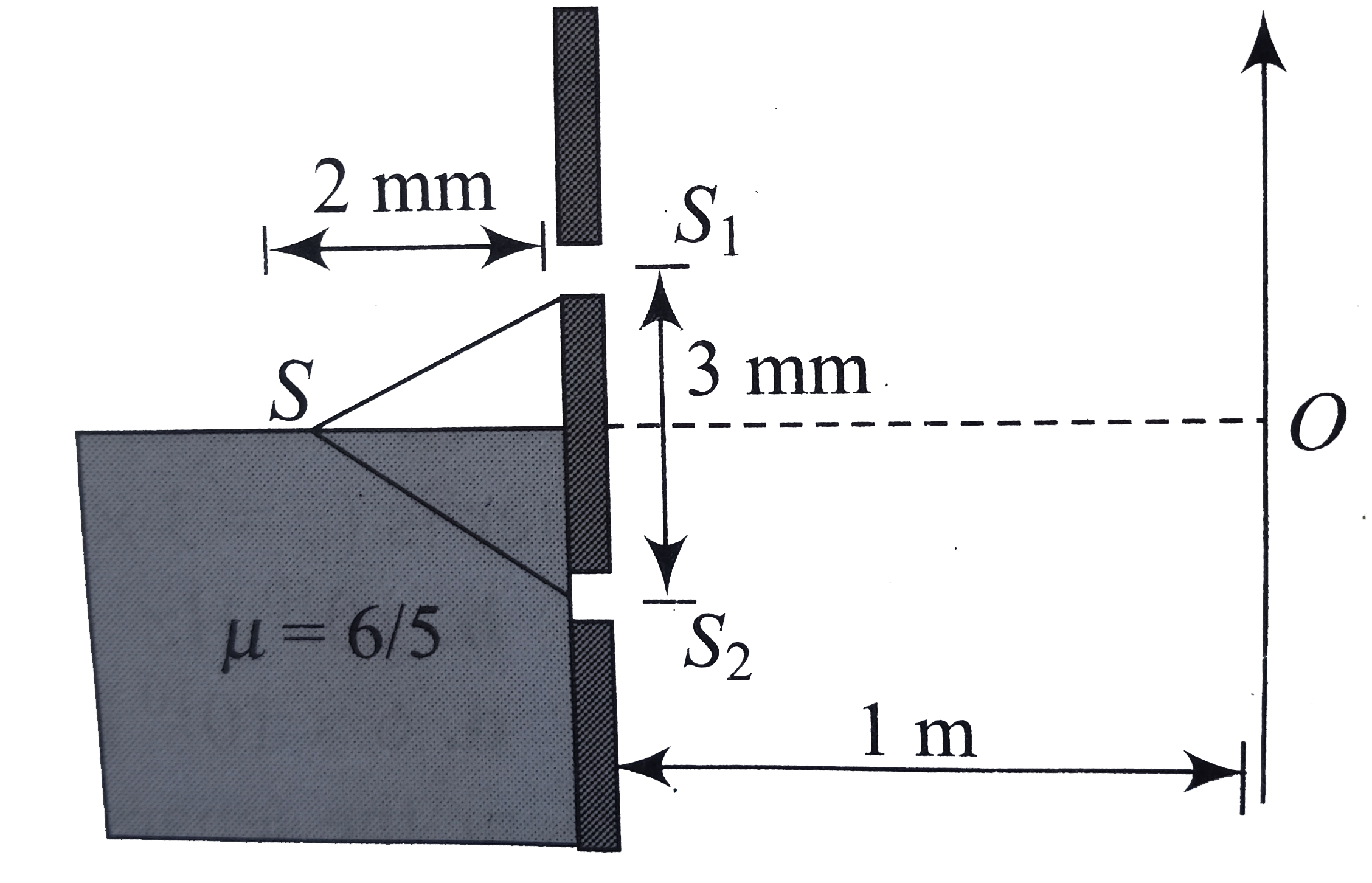In double slit pattern , the zero order and tenth order maxima fall at 12.34 mm and 14.73 mm from a particular reference point. If is changed to , find the position of zero order and tenth order fringes, other set up being same :
94 mm
The correct Answer is:B
or
When
.
The zero order fringe will occur at same position, at 12.34 mm. The 10th order at
.
Topper's Solved these Questions
- WAVE OPTICS BOOK - MODERN PUBLICATIONCHAPTER - WAVE OPTICS EXERCISE - MCQ LEVEL -1 (ASSERTIONS)
3 Videos
- WAVE OPTICS BOOK - MODERN PUBLICATIONCHAPTER - WAVE OPTICS EXERCISE - MCQ LEVEL -1 (PARAGRAPH QUESTIONS )
34 Videos
- WAVE MOTIONBOOK - MODERN PUBLICATIONCHAPTER - WAVE MOTIONEXERCISE - RECENT COMPETITIVE QUESTIONS
18 Videos
- WORK , POWER , ENERGY AND COLLISIONSBOOK - MODERN PUBLICATIONCHAPTER - WORK , POWER , ENERGY AND COLLISIONSEXERCISE - Revision Test
40 Videos
Similar Questions
In a double-slit pattern (λ=6000Å), the zero-order and tenth-order maxima fall at 12.34 mm and 1473mm from a particular reference point. If λ is changed to 5000Å, find the position of the zero order and tenth order fringes, other arrangements remaining the same.
View SolutionIn a double slit pattern (λ=6000Å), the first order and tenth order maxima fall at 12.50 mm and 14.75mm from a particular reference point. If λ is changed to 5500Å, find the position of zero order and tenth order fringes, other arrangements remaining the same.
View Solution
Knowledge Check
In a double slit pattern (λ=6000Å), the first order and tenth order maxima fall at 12.50 mm and 14.55mm from a particular reference point. If λ is changed to 5500Å, find the position of zero order and tenth order fringes, other arrangements remaining the same.
A1.25 mm and 2.55 mmB1.25 mm and 2.65 mmC2.50 mm and 3.10 mmD0.50 mm and 1.89 mmIn an interference pattern produced by using a biprism, the zeroth order maxima is at a distance of 4.7mm from a point P on the screen. If the fringe width is 0.2 mm, then the distance of the second minima from the point P will be
Aonly 4.4 mmBonly 5 mmCeither 4.4 mm or 5 mm depending upon the position of PD6 mmIn an interference pattern the position of zeroth order maxima is 4.8 mm from a certain point P on the screen. The fringe width is 0.2 mm. The position of second maxima from point P is
A5.1 mmB5 mmC40 mmD5.2 mm
In a double slit pattern (λ=6000Å), the first order and tenth order maxima fall at 12.50 mm and 14.75mm from a particular reference point. If λ is changed to 5500Å, find the position of zero order and tenth order fringes, other arrangements remaining the same.
View SolutionIn a double slit pattern (λ=6000Å), the first order and tenth order maxima fall at 12.50 mm and 14.55mm from a particular reference point. If λ is changed to 5500Å, find the position of zero order and tenth order fringes, other arrangements remaining the same.
View SolutionIn Young's double-slit experiment, a point source is placed on a solid slab of refractive index 6/5 at a distance of 2 mm from two slits spaced 3 mm apart as shown and at equal distacne from both the slits. The screen is at a distance of 1 m from the slits. Wavelength of light used is 500 nm.
a. Find the position of the central maximum.
b. Find the order of the fringe formed at O.
c. A film of refractive index 1.8 is to be placed in front of S1 so that central maxima is formed where 200th maxima was formed. Find the thickness of film.

View SolutionIn Young's double-slit experiment, a point source is placed on a solid slab of refractive index 6/5 at a distance of 2 mm from two slits spaced 3 mm apart as shown and at equal distance from both the slits. The screen is at a distance of 1 m from the slits. Wavelength of light used is 500 nm.
a. Find the position of the central maximum.
b. Find the order of the fringe formed at O.
c. A film of refractive index 1.8 is to be placed in front of S1 so that central maxima is formed where 200th maxima was formed. Find the thickness of film.

View SolutionIn Young's double slit experiment, the slits are 0.5mm apart and interference pattern is observed on a screen placed at a distance of 1.0m from the plane containg the slits. If wavelength of the incident light is 6000Å, then the separation between the third bright fringe and the central maxima is
View Solution
